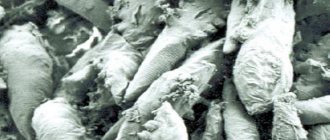No one argues that the diet of a dog of any breed must include meat. But whether it is necessary to give minced meat and, if so, what kind, there are diametrically opposed opinions. There is especially a lot of controversy over whether minced meat can be given to puppies.
Other questions immediately arise: how useful or harmful it is in feeding dogs, how well it is absorbed, and whether it is needed at all.
Let's talk about the types of this product, what it is made from, and if you include minced meat in your pet's diet, then how to do it with maximum benefit for the animal.
The benefits and harms of meat
High-quality ground meat is usually made from beef stomach without the use of additives. But the more expensive ones may also contain other by-products in crushed form, for example, liver, lung, tail, skin and fat.
Another option is meat with the addition of offal. In this case, beef tripe (cow stomach) is most often used. This variety is produced, as a rule, from second-grade beef; other types of meat can be used.
Beef
Ground beef is obtained from second-grade meat with the addition of offal or beef tripe (offal), to which other processed parts of the animal's body, for example, lungs and liver, can also be added.
In its raw form, it should be well frozen - for several days. After which it can be given to dogs in small quantities, mixed into porridges or soups.
Chicken
Regarding minced chicken, it must be said that it can cause allergies, especially in small breed dogs. If the dog is aged, the volume of the product should be reduced by 20% compared to the amount given to an adult young individual. Pregnant dogs can include this product in their diet, mixing it with vegetables to avoid constipation.
Pork
As for minced pork, it is quite fatty, so it is better not to give it to dogs at all. This type of feeding may cause liver problems.
Other
There is minced rabbit, lamb, horse meat and other types of meat. In each individual case, it is necessary to take into account the feeding characteristics of the breed. And if this is a shelter with a large number of animals, you need to follow the general rules: the product must be well frozen, added to cereals or liquid food in small quantities.
And, of course, it is necessary to monitor the animals’ reaction to a new product in the diet.
Industrial bones
Solid dog treats from the pet store are the answer for many breeders. They are inexpensive and sold everywhere.
A pet eating dry food should not eat natural offal. The acidity in the stomach will not be able to digest them, especially long bone. For such dogs, only industrial analogues are preferred.
There are several types of artificial seeds:
- Calcium. Form and maintain tooth enamel. Help older dogs keep their musculoskeletal system healthy and strong. The packaging indicates the weight of the animal and the required amount of product. Large individuals are given one piece per day, miniature ones are divided into several parts.
- From tendons. Suitable for additional teeth cleaning. The composition of the product is completely natural. Bones are given to dogs with allergies. They do not cause a reaction in the body. Puppies who indulge in such treats can spend several hours eating.
- Chewable. Not suitable for dogs under 4 months. The owner should carefully read the instructions.
- Gelatin. They remove food debris, maintain healthy tooth enamel, and distract the dog while waiting for the owner. Bones are an additional source of collagen. Some representatives of the pet industry add vitamins and minerals to the composition. Zoologists give them to pregnant dogs to keep fit.
- Chicken. An ideal analogue to natural bones. The taste of the product is indistinguishable from natural.
Store-bought treats can also be dangerous for dogs, especially small ones. Unchewed pieces get stuck in the throat, causing suffocation. If such an incident occurs, the owner must take the dog in his arms, talk to him calmly and affectionately, open his mouth, and remove the foreign object. The main thing is not to panic and maintain composure. In this case, no one except a person can save the four-legged animal.
Benefits of production seeds:
- When changing teeth, the puppy experiences discomfort and itching in the mouth. Solid treats make teething easier;
- Your teeth will be clean and strong, your gums will be healthy;
- One seed contains a large amount of vitamins and minerals.
Small dogs should not be left alone with treats. Despite the fact that the manufactured analogue is softer than the natural one, the puppy’s undeveloped muscles are not able to thoroughly chew solid food.
How to give?
If you are a proponent of including this product in your dog's diet, you should consider the frequency - no more than 3-4 times a week and only in small quantities.
In this case, you need to combine it with other products: pumpkin, lettuce, Brussels sprouts, tomatoes, cucumbers, beets. It is useful to give along with fruit, especially apples. Citrus fruits should be strictly excluded.
You can add finely chopped greens and combine well with nettles scalded with boiling water.
When including minced meat in the diet of puppies, you need to know that its norm is 50 g per kg of baby’s weight. You can give it from one and a half months, and from 3 months you need to switch to meat in pieces.
Raw and cooked
Raw minced meat contains more protein, but in this form the product must be frozen within 24 hours. This will help avoid parasite infestation. If you give it boiled, the loss of protein is small: only about 6%, but you need to put the minced meat in boiling water. By the way, the product is absorbed equally well both raw and boiled.
Experts recommend giving minced meat from offal and pork only in boiled form. Before cooking, be sure to review and test the composition of the product - it should not contain any foreign or dangerous additions.
Be sure to let the minced meat drain well. Manufacturers are often unscrupulous, so everything depends on your personal control of the quality of the purchased product.
With porridge
Is it possible to give dogs minced meat with porridge? Need to! It is to the porridge (or soup) that you need to add a small amount of the product after it has been frozen. Under no circumstances should you feed your animal only minced meat - this can lead to intestinal upset and other unpleasant problems.
Here is one of many recipes for porridge that your pet will definitely like if he is used to “natural”:
First, boil the buckwheat or rice until tender. This is one part of the ratio of the proportions of the finished dish. Then add grated carrots to the cereal - another ingredient. Finally, add 2 parts of minced meat and 1 tablespoon of odorless vegetable oil. Mix everything. It will be delicious! Your friend will certainly appreciate it.
How to make a cake?
Dogs tend to love all kinds of treats. Therefore, you can please your pet with a delicious cake. You can bake it yourself - you know very well what your four-legged friend likes.
And if you don’t have time, but there is a reason, for example, an important achievement in training or an award at a competition, you can buy a ready-made cake. There is a lot of choice today. And confectioners who bake for dogs are well aware of what the composition of such a product should be.
For the cake that you decide to bake yourself, you will need a simple set of products:
- 1 kg of lean minced beef (or rabbit, turkey, liver, mixture of offal);
- 200-300 g of vegetables, which need to be cut into small cubes;
- 1 egg;
- 1 cup rice cereal (or buckwheat, oatmeal - whatever your pet likes.
Mix all the products, place in a mold, bake for 20 minutes at 250°C.
All that remains is to decorate after cooling. This could be low-fat sour cream, or light cream, or small dog biscuits, pieces of pumpkin, apples, even some crushed nuts. Just not raisins or grapes!
What dogs can you give it to?
Starting from three weeks of age, puppies can be given any minced meat in a volume of 50 g per kilogram of weight. Adult dogs can be given minced meat three to four times a week. You should not feed minced meat to dogs prone to allergies or poor digestion.
Minced chicken should be given carefully to small breed dogs, such as pugs, as they are often allergic to chicken. An elderly pet should be given minced meat in a smaller volume (20%) than an adult dog. For pregnant dogs, minced meat should be mixed with vegetables to prevent constipation.
From offal
Minced meat from offal differs from other types in that it contains a large set of vitamins, protein, and many essential microelements. And the liver and kidneys contain essential fatty acids. The presence of vitamin D makes this species especially important in winter.
Usually the stomach, liver, heart, udder, lungs, kidneys, and meat trimmings are used for cooking. Before cooking at home, you need to rinse all offal well, let the water drain, and then pass it through a meat grinder.
Since offal is low in fat and carbohydrates, it is considered a dietary product. But you shouldn’t get carried away, despite the great benefits. By-products can be given twice a week, and they should not exceed 15% of the diet. Only a small amount is allowed daily.
Recommendations for feeding dogs with minced meat
There are times when it becomes necessary to replace meat with minced meat, for example, it is not possible to purchase natural whole meat or feeding only meat is impossible, for example, in nurseries where a large number of dogs are kept. In such situations, raw ground beef should be given, frozen overnight and without additives. This product should be given in small quantities at one feeding, mixed with porridge or soup.
It is acceptable to feed minced meat to puppies aged 1.5-2 months. Starting from 3 months, puppies are given exclusively pieces of meat.
Sources:
https://toi-terer.ru/kostnyj-farsh-dlja-sobak.php https://bobik.online/korm/farsh.html https://v-mire-sobak.ru/korm-dlja-sobak/ farsh-dlja-sobak.html
Can it be fish?
Minced fish should be from sea fish, and if it is river or lake fish, then red species. Before cooking it, large bones must be removed from the fish. This product should be combined with vegetables, which can be given raw or poached after chopping. Cannot be combined with meat or dairy products.
In addition to vegetables, a couple of spoons of rice would be a good addition: it is better to take unpolished, brown (for large breeds) or a small amount of rye flakes that need to be steamed.
Bottom line
This topic, meat for dogs as a business, is promising both as a separate business and as a direction within a butcher shop. The investments that I described are desirable figures; you can start with a smaller amount (I started moving with 10 thousand rubles), but you will need athletic patience and a hell of a lot of work. You can launch production, sales, and start making a profit within 2 weeks (if you don’t make unnecessary moves and costs).
With proper organization of all processes, the risks inherent in the meat business are reduced to almost zero, and profits can be very decent. But, as in any business, there are many pitfalls and nuances.
Despite the apparent simplicity of this business at first glance, during the first year of work I almost lost it several times.
Whether the trade works or not will ultimately depend on a deep knowledge of its clients, both the end (dogs) and their owners. And the amount of profit will directly depend on: how well the logistics for purchasing raw materials are organized; a balance has been set between technological effectiveness of production and product convenience for the client; and, of course, the amount of sales work done.
To help you bypass all the pitfalls and immediately build this business correctly, so that it brings you the profit you deserve, I have developed a detailed
Step-by-step Guide to starting the production of semi-finished products for dogs.
Having studied it, you will be able to do everything correctly right away and make a profit in the first month. According to my Guide, you can easily set up all work processes efficiently; I outlined all the work technology in it in as much detail and step by step as possible, without a single omission.
There will be a minimum of questions, I speak from more than eight years of experience in helping to launch this business. Of course, I will answer all your questions in detail by email.
Here are the main topics that are discussed in detail in the Guide:
— What information is needed for a confident start and how to collect it reliably, so as not to guess, but to rely on facts. — Under what conditions does it make sense to start this business and what to do if these conditions do not exist in your city. — The main hidden mistake of most people when starting up and how to avoid it. — A clear procedure for correct actions, repeatedly honed in practice. — How to easily, cheaply and quickly produce a trial batch, what is necessary for this. — How to properly conduct a test launch of production and sales so that the business takes off. — Optimal list of equipment for a test run. — The best scheme for working with suppliers and important nuances of negotiations - this will allow you to work even in the most problematic region for suppliers. - Detailed specification of raw materials - you will know all the criteria for choosing healthy raw materials, even if you have never seen them before. — A complete comprehensive package of documents according to the law and recommendations on how to work in reality. — What kind of workers are needed, practical recommendations on how to increase their productivity. — Which sales scheme to choose when starting a business. — Which sales scheme is the best and why. — How to negotiate with stores (working conversation script, sample contract). — Which stores to start working with. — How to calculate prices. — Ready-made samples of stickers for labels. — How to keep records, which indicators are really important, examples of calculations. — How should production be organized for maximum productivity ? This work scheme will not only give you the opportunity to quickly produce a really huge volume of production and meet any demand, but it will also not kill your workers. - The correct order and technology for processing raw materials - this will allow you to produce products in a form that is truly convenient for customers and compete not only with direct competitors, but also with hellish dry food manufacturers! — How to organize delivery to your home and stores. — Which transport is better to use and how to pay. — The correct order acceptance scheme will allow punctual delivery of large volumes. — Which packaging is better from the customers’ point of view. — What assortment must be present and what is best to remove from it so as not to slow down the business (recommendations based on statistics and profits). - Where and how to look for clients - the most effective places, the right communication scenarios. — Where and how to promote and advertise products are the most effective free and inexpensive tools. — Recommendations for creating a group, website and advertising on the Internet. — Why sales can be “dead” and how to avoid it. — Analysis of my mistakes, because of which I almost closed my business. — When and how to switch to a flow-line production and sales scheme. — What equipment is needed for the flow diagram (list with specifications).
Read a detailed description of the Guide to this business and purchase it here: https://pf.meatshops.ru/
I sincerely recommend this business to breeders, owners of kennels, dog hotels, pet stores for dogs - it will be quite easy for you to move - you know what dogs need firsthand, you are a professional in your field, which means they trust you, and besides, you There is a base of regular customers.
Remember, this topic can bring from 80 to 200 thousand rubles or more.
Why can't it be bone?
It is believed that minced bone can compensate for acute calcium deficiency in the animal’s body.
But let’s say right away that for this the bones must be thoroughly crushed. Large pieces, at best, will transit through the intestines, at worst, they will affect the mucous membrane, linger and cause obstruction. Then serious surgery will be required.
In addition, it will not be possible to cope with calcium deficiency only through minced bones - you will still need to use medications. And for puppies it is generally not suitable as a calcium supplement.
Moreover, in no case should this product be used as the main one in feeding due to its low cost. This species, even if well crushed, has the property of being compressed into a solid mass and forgetting the intestines.
This product can be given to adult pets once a day, adding a minimal amount to porridge or soup.
Veterinarians have identified a certain pattern: those dogs whose diet contained large quantities of minced bone are more likely to suffer from stomach ulcers. Therefore, it is better to refuse it.
What is minced meat made from and why is it dangerous for dogs?
A quality product is usually made from beef stomach without the use of any additives. But the cheaper ones may also contain other chopped by-products, such as lungs, skin, liver, tails, and fat.
Of particular danger is chicken bone mince, which is made from chopped chicken bone tissue and bone marrow, or meat and bone mince, which contains a small amount of meat, mainly trim, skin, which contains a lot of fat that is harmful to dogs.
Minced bone is introduced into the diet of animals due to its low cost, as well as for the purpose of replenishing calcium in the pet’s body. However, if calcium is absorbed, it is in very small quantities, and there are safer and calcium-rich foods. Ground bones are not digested and the animal is not satisfied, experiencing a constant feeling of hunger.
Minced bone is also dangerous for dogs because if fed in large quantities, it clogs the stomach and intestines, thereby disrupting the digestion process and causing constipation. In case of uneven grinding, the mass may contain large sharp fragments, which, when entering the stomach and intestines, can injure the mucous membrane, which in turn leads to more serious consequences.
Frequently feeding dogs minced meat, especially puppies over 3 months old, increases the risk of developing stomach ulcers.
Meat and bone
It is quite acceptable to use minced meat and bones in feeding if it is prepared without any violations, i.e. does not contain pieces of sharp bones or large fragments.
In addition to bones, it contains lean meat, meat trimmings, cartilage, skins and offal. The ratio of ingredients varies. At home, it can be prepared from chicken necks.
Registration and documents
As long as you sell meat and offal for dogs with home delivery or in your own butcher shop (as a related product), you do not need to draw up any documents for the products (by law you need to, but in fact you simply won’t have anyone to show this declaration to) ). But when you start working with stores, you will need to issue a Declaration of Conformity to the Technical Regulations of the Customs Union for all supplied products. This requirement is stated in Decree of the Government of the Russian Federation of December 1, 2009 No. 982.
At first, I recommend working only with dog owners , selling products directly, then start looking for stores where they will take products without declaration. And only when your sales are already confident, you sell more than 200-300 kg per week, you can move on to the documents. At this stage, the reaction of the market and its features, assortment preferences will be visible.
I provide a complete list of necessary documents and the procedure for their preparation in practice (for individual entrepreneurs, OKVEDs, Mercury, Veterinary requirements, etc.) in my Guide to this business.
This is the correct order to start a business. To first draw up documentation, rent a workshop, and other accounting fuss that has nothing to do with the very essence of the business is, I would even say, a bad omen 
At an earlier stage, there is a risk of simply wasting money on documents that is very necessary for promotion, and you will no longer have the energy to properly launch the business.
I’ll emphasize once again, don’t skimp on the paperwork, in our country thousands of meat shops operate even without an individual entrepreneur, especially in small towns everything is resolved as usual: we negotiate with money. And in such an essentially guerrilla business as p/f for dogs, everything is even simpler.
Reviews
Owners
Victoria, owner:
“I may upset someone, but this is not dog food, and not porridge either. You need beef tripe, beef, cottage cheese. Minced meat is poorly digestible due to the peculiarities of the gastrointestinal tract of dogs, which can cause illness, and porridge breaks down the stomach. The dog runs the risk of turning into something like a barrel.”
Elena, owner:
“I feed my Doberman homemade minced hedgehogs. The portion is enough for a day: I take 1 kg of minced meat (I make it from beef and offal), add a glass of rice (cook), 2 raw eggs, rub 3 medium carrots - I form hedgehogs and put them in the oven for 40 minutes. The dog really likes it.”
Tatiana, owner:
“A dog is a predator. She needs meat in pieces, and the minced meat flies in transit through the intestines, no nutritional value. The dog doesn't eat enough. Therefore, only meat (at least 60% of the portion), the rest is porridge with water from rice or buckwheat and stewed vegetables - 20% each. Just not potatoes or white cabbage.”
Vet
Dmitry, veterinarian:
“Many dog owners have a misconception that they can feed minced meat instead of meat. This way the product is absorbed faster and better. This is not true. After all, a dog does not chew food, it swallows it, tearing off pieces. The gastrointestinal tract of dogs is designed in such a way that it is better to digest food in pieces. Therefore, feeding minced meat is impractical and even harmful.”
Let's look at the business scheme in more detail
Now I will analyze the aspects of this business in more detail.
So, this is a very simple technology for the production of natural dog food, namely: frozen semi-finished products from beef, lamb and chicken offal.
It can be organized either at a butcher shop or as a separate production with delivery to other stores.
The main assortment is medium-sized pieces of tripe (beef proventriculus), heart, liver, meat from beef heads, grade 3 meat, as well as large meaty bones, legs, tails, singed ears, chicken necks, it is possible to add fish to the assortment.
This food is purchased by dog owners who take a responsible approach to feeding their pets and understand the importance and benefits of feeding natural products.
Among them there are all segments of the population, but the middle class predominates (the greatest profit comes from it), it is important to understand that each class needs its own sales scheme.
The main strengths of this product are that it has a good profit percentage (from 50 to 300%) and is pleasant and easy to sell (with a clear conscience), it is a quality natural product that dogs actually need.
Dogs should be given boiled or raw bones.
In many homes, especially in rural areas, it is believed that the dog can eat leftovers from the owners' food, including boiled beef bones, pork bones and poultry soup. Meanwhile, no boiled bone is good for a dog. Cooking changes the structure of bones, they completely change their properties, harden and become sharp when broken. Once bitten and swallowed, they can block the intestines, and then the only salvation for the dog is surgical intervention, just like after eating poultry bones. Therefore, it is better not to tempt fate and not offer your dog boiled bones.
It is also prohibited to give dogs baked and fried bones (for example, from pork chops), mainly after any heat treatment. Once cooked, a large beef or veal shank bone should only be removed by a dog under supervision, especially if the dog is large and can handle chewing and eating. Definitely, a bone for a dog should be raw, fresh, beef or veal.











